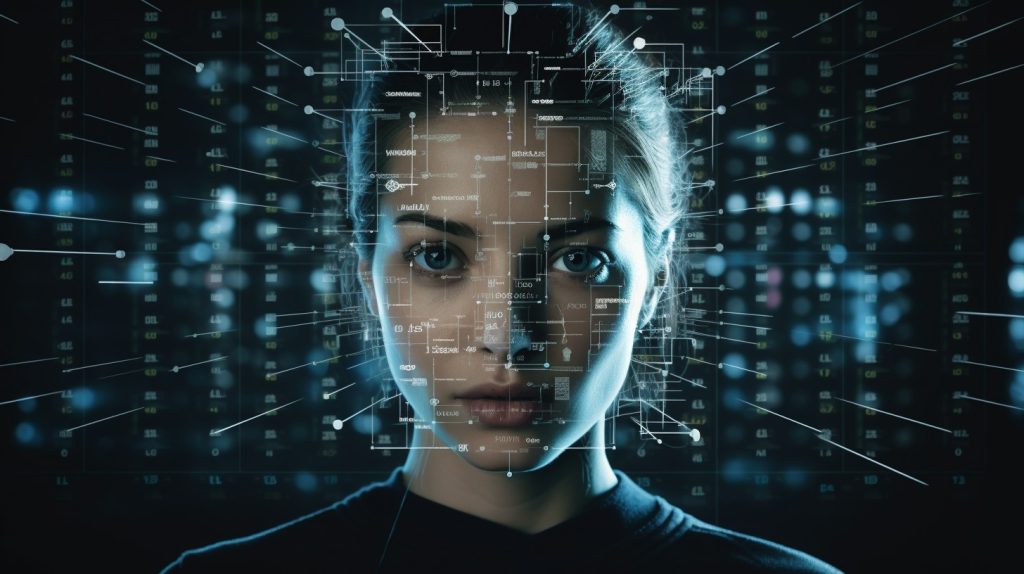Technology
The Dark Side Of AI: How Deepfakes Are Shaping Misinformation
Published
2 years agoon

The entertainment industry has witnessed a transformative impact from deepfake technology, allowing for creative and imaginative works. Yet, like any powerful tool, there exists a potential for misuse. The recent proliferation of deepfake videos featuring popular actors Rashmika Mandanna and Katrina Kaif, which went viral, has ignited concerns regarding the dissemination of disinformation and manipulation. Encountering the term “Deepfake” is inevitable if you are active on social media. However, comprehending deepfakes requires a prior understanding of what AI entails.
Artificial Intelligence (AI) has undoubtedly revolutionised various aspects of our lives, from streamlining everyday tasks to enhancing medical diagnostics. However, as with any powerful tool, AI is not exempt from misuse. One ominous manifestation of this misuse is the rise of deepfakes, a technology that allows the creation of highly convincing fake videos and audio recordings. In this article, we will delve into the dark side of AI, exploring the emergence of deepfakes and their profound impact on shaping misinformation.
Responding to this disconcerting trend, the Indian government has taken action. The Ministry of Electronics and Information Technology has issued a reminder to social media platforms, emphasising the legal provisions and potential penalties associated with the creation and circulation of deepfakes. Specifically, Section 66D of the Information Technology Act, 2000, addressing “punishment for cheating by personating using a computer resource,” stipulates imprisonment and fines for those found guilty.
Understanding Deepfakes

Deepfakes, encompassing synthetic media like videos, images, or audio recordings generated and altered using advanced artificial intelligence techniques, rely on deep learning algorithms. These algorithms can learn and replicate patterns from extensive datasets, rendering deepfakes remarkably realistic and often deceptive. By superimposing one person’s face onto another’s body, deepfakes create an illusion of actions or statements that were never genuinely performed.
The potential for deepfake misuse underscores the need for ethical guidelines and regulatory measures. The manipulation of digital media carries significant risks and consequences for society. While the capabilities of deepfake technology are awe-inspiring, caution is essential regarding its potential to spread misinformation and manipulate public perception.
Initially, the technology was developed for entertainment purposes, such as face-swapping in movies, but it has since evolved into a potent tool for malicious purposes.
The Proliferation of Misinformation
One of the gravest consequences of deepfakes is their potential to fuel misinformation. Rashmika Mandanna, expressing her apprehension, described the incident as “extremely scary,” emphasizing the potential harm caused by the misuse of technology. This sentiment is shared by several voices in the film industry, including legendary actor Amitabh Bachchan, who advocates for legal action.
With the ability to manipulate the facial expressions, gestures, and even voice tones of public figures, deepfakes can convincingly depict them engaging in actions or making statements they never did. This poses a severe threat to public trust, as viewers may find it increasingly challenging to differentiate between authentic and manipulated content.
Social Consequences
Deepfakes are not limited to political arenas; they can permeate various aspects of society, leading to social unrest and individual harm. False accusations, fabricated confessions, or distorted speeches attributed to public figures can incite panic or outrage. Relationships, both personal and professional, can be strained as individuals struggle to discern fact from fiction. The psychological toll on those targeted by deepfake misinformation can be profound, with reputations irreparably damaged.
Technological Challenges
The rapid advancement of deepfake technology presents a formidable challenge for detection and mitigation. As algorithms become more sophisticated, it becomes increasingly difficult to identify manipulated content using traditional methods. Researchers and tech companies are in a constant race to develop countermeasures and authentication tools, but the evolving nature of deepfakes requires continuous innovation to stay ahead.
Implications for Journalism
The spread of deepfake technology has profound implications for journalism and media credibility. Journalists already grapple with the challenges of misinformation and disinformation, and the rise of deepfakes adds a new layer of complexity. The potential for malicious actors to circulate fabricated videos of public events or statements challenges the traditional role of journalists as purveyors of truth. News organizations must invest in advanced verification techniques to maintain their credibility in the face of this evolving threat.
Tip of the Iceberg
As appalling as the deepfakes featuring Rashmika Mandanna and Katrina Kaif may be, they merely scratch the surface of a more extensive issue. Numerous women in India have fallen victim to the online leaking of morphed images and deepfake videos.
Despite the Indian government emphasizing a penalty of three years in jail and a fine of Rs. 1 lakh for those sharing or posting such illicit content online, significant challenges persist.
Primarily, coaxing someone to register a complaint proves to be a formidable task. Even when a complaint is lodged, arrests are seldom made. Consequently, the uploader often evades prosecution, and the enforcement of the prescribed penalties becomes a rarity.
In India, authorities frequently resort to pressuring social media platforms with threats of penalties and jail time for their executives to have the illicit posts taken down. While this approach may yield results on occasion, it remains a temporary fix at best. The wrongdoer, often, escapes consequences.
Regarding the responsibility of social media companies in allowing such posts on their platforms, most lack efficient mechanisms to filter out such content promptly. Content moderation is a time-consuming and expensive process. While many companies are developing systems to flag such content, these mechanisms heavily rely on AI, which, unfortunately, can be easily manipulated.
Protecting Against Deepfake Threats
Addressing the dark side of AI requires a multi-faceted approach. Legal frameworks must adapt to encompass the creation and dissemination of deepfakes, with penalties for those who use the technology for malicious purposes. Technology companies must invest in robust detection mechanisms and collaborate with researchers to stay ahead of evolving deepfake techniques. Media literacy programs can empower the public to critically evaluate the content they encounter, fostering a society better equipped to navigate the complexities of the digital age.
Legislation Inspired by Singapore and China
Although the deepfakes featuring Rashmika Mandanna and Katrina Kaif are not a novel phenomenon, their current prominence can be attributed to the widespread discussion surrounding AI, a trending topic that often evokes concern.
What India requires are laws that are not just in existence but are also enforceable, especially in the context of deepfakes where specific legislation is currently lacking.
Drawing inspiration from nations like Singapore and China, where individuals have faced legal consequences for disseminating deepfakes, presents a viable solution. China’s Cyberspace Administration has recently implemented comprehensive legislation aimed at regulating the creation and dissemination of deepfake content. This legislation explicitly prohibits the generation and spread of deepfakes without the consent of individuals and mandates the incorporation of specific identification measures for AI-produced content.
In Singapore, the Protection from Online Falsehoods and Manipulation Act (POFMAN) serves as a legal framework that expressly prohibits deepfake videos. Similarly, South Korea mandates the labeling of AI-generated content and manipulated videos and photos, such as deepfakes, on social media platforms.
While India works towards introducing similar legislation, it can leverage existing laws, particularly Sections 67 and 67A of the Information Technology Act (2000). These sections contain provisions that can be invoked in analogous situations. Notably, elements of these sections, pertaining to the publication or transmission of obscene material in electronic form and related activities, can be applied to safeguard the rights of individuals victimized by deepfake activities, including instances of defamation and the dissemination of explicit content, all within the framework of the aforementioned Act.
You may like
-


The Preliminary Findings of Air India AI171’s Tragic Crash Paint a Disturbing Picture
-


Japan’s Petabit Internet Is Faster Than You can Possibly Imagine
-


Cursed or Collectible? Labubu Dolls Likened to Ancient Demon
-


Elon Musk Launches ‘America Party’, But is it A Political Pipe Dream?
-


IPL 2025 Suspended As India-Pakistan Tensions Escalate
-


“We Will Make Them Pay If…”: Pakistan’s Aggressive Threats Spark Regional Tensions


